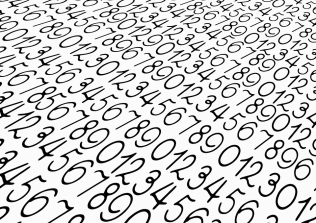 Industrial companies want their assets to generate more revenue without investing further in infrastructure upgrades. It makes sense because the upgrade is extremely expensive! They need to leverage existing systems to achieve this. Large assets usually come with sensors that are collecting data about basic metrics like temperature, pressure, and so on. If they have a system that can intelligent assess the conditions that affect manufacturing processes, then the operators can make decisions based on that information. How do we achieve that? How does it work in practice? Continue reading “How to Deploy Artificial Intelligence in the Industrial World”
Industrial companies want their assets to generate more revenue without investing further in infrastructure upgrades. It makes sense because the upgrade is extremely expensive! They need to leverage existing systems to achieve this. Large assets usually come with sensors that are collecting data about basic metrics like temperature, pressure, and so on. If they have a system that can intelligent assess the conditions that affect manufacturing processes, then the operators can make decisions based on that information. How do we achieve that? How does it work in practice? Continue reading “How to Deploy Artificial Intelligence in the Industrial World”
Chasing Fermat’s Last Theorem
 Fermat’s Last Theorem is one of the most celebrated problems in mathematics. It is a problem in the field of Number Theory that’s very simple to understand, yet extremely difficult to solve. In fact, it’s so difficult that it remained unsolved for 358 years even though it got a lot of attention from some of the best mathematicians in history. Pierre de Fermat first came up with it in 1637. It remained a conjecture because he didn’t provide any proof. Let’s go ahead and explore this labyrinth, shall we? Continue reading “Chasing Fermat’s Last Theorem”
Fermat’s Last Theorem is one of the most celebrated problems in mathematics. It is a problem in the field of Number Theory that’s very simple to understand, yet extremely difficult to solve. In fact, it’s so difficult that it remained unsolved for 358 years even though it got a lot of attention from some of the best mathematicians in history. Pierre de Fermat first came up with it in 1637. It remained a conjecture because he didn’t provide any proof. Let’s go ahead and explore this labyrinth, shall we? Continue reading “Chasing Fermat’s Last Theorem”
Dissecting Diophantine Equations
 The word Diophantine refers to Diophantus, the third century mathematician from Alexandria. Numbers are the fundamental building blocks of mathematics, so he started thinking about problems for which we need integer solutions. For example, how many horses do we need to achieve a particular task? Even if the exact answer is 15.5, we cannot really cut the last horse into half. So he started studying these problems in order to develop a sound framework around it. This went on to become one of the most enigmatic and endearing fields in the history of mathematics. Diophantine equations have become so fundamental that we cannot imagine our world without them. Let’s go ahead and see what they are all about, shall we? Continue reading “Dissecting Diophantine Equations”
The word Diophantine refers to Diophantus, the third century mathematician from Alexandria. Numbers are the fundamental building blocks of mathematics, so he started thinking about problems for which we need integer solutions. For example, how many horses do we need to achieve a particular task? Even if the exact answer is 15.5, we cannot really cut the last horse into half. So he started studying these problems in order to develop a sound framework around it. This went on to become one of the most enigmatic and endearing fields in the history of mathematics. Diophantine equations have become so fundamental that we cannot imagine our world without them. Let’s go ahead and see what they are all about, shall we? Continue reading “Dissecting Diophantine Equations”
Understanding Catalan’s Conjecture
 Numbers are deceptively simple. We use them everyday in a variety of contexts. It’s beautiful how there are so many mysteries hidden inside these numbers. Catalan’s Conjecture is a mathematical problem that’s really easy to understand, but extremely difficult to prove. In fact, it took around 158 years to come up with a mathematical proof. It was Preda Mihăilescu, the amazing Romanian mathematician, who came up with a proof in 2002. In solving these problems, mathematicians come up with profound ideas and formulations that impact many fields within mathematics. Let’s go ahead and peel this metaphorical onion, shall we? Continue reading “Understanding Catalan’s Conjecture”
Numbers are deceptively simple. We use them everyday in a variety of contexts. It’s beautiful how there are so many mysteries hidden inside these numbers. Catalan’s Conjecture is a mathematical problem that’s really easy to understand, but extremely difficult to prove. In fact, it took around 158 years to come up with a mathematical proof. It was Preda Mihăilescu, the amazing Romanian mathematician, who came up with a proof in 2002. In solving these problems, mathematicians come up with profound ideas and formulations that impact many fields within mathematics. Let’s go ahead and peel this metaphorical onion, shall we? Continue reading “Understanding Catalan’s Conjecture”
What is Empirical Risk Minimization
 Even though it has an ornate name, the underlying concept is actually quite simple and intuitive. The concept of Empirical Risk Minimization becomes relevant in the world of supervised learning. The actual goal of supervised learning is to find a model that solves a problem as opposed to finding a model that best fits the given dataset. Since we don’t have every single data point that represents each class completely, we just use the next best thing available, which is a dataset that’s representative of the classes. We can think of the process of supervised learning as choosing a function that achieves a given goal. We have to choose this function from a set of potential functions. Now how can we measure the effectiveness of this chosen function given that we don’t know what the actual distribution looks like? Bear in mind that all the potential functions can achieve the given goal. How do we find the function that’s the best representative of the true solution? Continue reading “What is Empirical Risk Minimization”
Even though it has an ornate name, the underlying concept is actually quite simple and intuitive. The concept of Empirical Risk Minimization becomes relevant in the world of supervised learning. The actual goal of supervised learning is to find a model that solves a problem as opposed to finding a model that best fits the given dataset. Since we don’t have every single data point that represents each class completely, we just use the next best thing available, which is a dataset that’s representative of the classes. We can think of the process of supervised learning as choosing a function that achieves a given goal. We have to choose this function from a set of potential functions. Now how can we measure the effectiveness of this chosen function given that we don’t know what the actual distribution looks like? Bear in mind that all the potential functions can achieve the given goal. How do we find the function that’s the best representative of the true solution? Continue reading “What is Empirical Risk Minimization”
Measuring the Stability of Machine Learning Algorithms
 When you think of a machine learning algorithm, the first metric that comes to mind is its accuracy. A lot of research is centered on developing algorithms that are accurate and can predict the outcome with a high degree of confidence. During the training process, an important issue to think about is the stability of the learning algorithm. This allows us to understand how a particular model is going to turn out. We need to make sure that it generalizes well to various training sets. Estimating the stability becomes crucial in these situations. So what exactly is stability? How do we estimate it? Continue reading “Measuring the Stability of Machine Learning Algorithms”
When you think of a machine learning algorithm, the first metric that comes to mind is its accuracy. A lot of research is centered on developing algorithms that are accurate and can predict the outcome with a high degree of confidence. During the training process, an important issue to think about is the stability of the learning algorithm. This allows us to understand how a particular model is going to turn out. We need to make sure that it generalizes well to various training sets. Estimating the stability becomes crucial in these situations. So what exactly is stability? How do we estimate it? Continue reading “Measuring the Stability of Machine Learning Algorithms”
Ergodicity In The World Of IoT
 Ergodicity is one of the most important concepts in statistics. More importantly, it has a lot of real world applications. In this case, it’s applicable to the staggering number of internet connected devices in the world of Internet of Things (IoT). Most of the experiments conducted by research labs, businesses, and marketing agencies often rely on statistics to compile the results. This can be about a set of customers, voters, viewers, or any other segment. Ever wondered why the results are often inaccurate? One of the main reasons is the underlying assumption about ergodicity. What exactly is it? Continue reading “Ergodicity In The World Of IoT”
Ergodicity is one of the most important concepts in statistics. More importantly, it has a lot of real world applications. In this case, it’s applicable to the staggering number of internet connected devices in the world of Internet of Things (IoT). Most of the experiments conducted by research labs, businesses, and marketing agencies often rely on statistics to compile the results. This can be about a set of customers, voters, viewers, or any other segment. Ever wondered why the results are often inaccurate? One of the main reasons is the underlying assumption about ergodicity. What exactly is it? Continue reading “Ergodicity In The World Of IoT”
Cauchy Sequences In The Real World
 Sequences occur everywhere in our daily life. Some of the examples include sensor data, stock market quotes, speech signals, and many more. A sequence is a collection of elements where each element is indexed. Repetitions are allowed in this case, which means any element can reappear in a given sequence. If we look closely, we can see that sequences are rich in information. In theory, we can design sequences with amazing characteristics and study them. This allows us to approximate real world processes using these sequences so that we can estimate what’s going to happen in the future. Cauchy sequence is one such sequence that’s very fundamental to a lot of fields. Let’s dig deeper and see why it’s relevant, shall we? Continue reading “Cauchy Sequences In The Real World”
Sequences occur everywhere in our daily life. Some of the examples include sensor data, stock market quotes, speech signals, and many more. A sequence is a collection of elements where each element is indexed. Repetitions are allowed in this case, which means any element can reappear in a given sequence. If we look closely, we can see that sequences are rich in information. In theory, we can design sequences with amazing characteristics and study them. This allows us to approximate real world processes using these sequences so that we can estimate what’s going to happen in the future. Cauchy sequence is one such sequence that’s very fundamental to a lot of fields. Let’s dig deeper and see why it’s relevant, shall we? Continue reading “Cauchy Sequences In The Real World”
Measuring The Memory Of Time Series Data
 Time series data has memory. It remembers what happened in the past and avenge any wrongdoings! Can you believe it? Okay the avenging part may not be true, but it definitely remembers the past. The “memory” refers to how strongly the past can influence the future in a given time series variable. If it has a strong memory, then we know that analyzing the past would be really useful to us because it can tell us what’s going to happen in the future. If you need a quick refresher, you can check out my blog post where I talked about memory in time series data. We have a high level understanding of how we can classify time series data into short memory and long memory, but how do we actually measure the memory? Continue reading “Measuring The Memory Of Time Series Data”
Time series data has memory. It remembers what happened in the past and avenge any wrongdoings! Can you believe it? Okay the avenging part may not be true, but it definitely remembers the past. The “memory” refers to how strongly the past can influence the future in a given time series variable. If it has a strong memory, then we know that analyzing the past would be really useful to us because it can tell us what’s going to happen in the future. If you need a quick refresher, you can check out my blog post where I talked about memory in time series data. We have a high level understanding of how we can classify time series data into short memory and long memory, but how do we actually measure the memory? Continue reading “Measuring The Memory Of Time Series Data”
What Is Pareto Optimality
 Let’s consider a business deal where there are multiple parties negotiating the terms. In such a situation, it’s usually not possible for every single party to get everything it wants. They need to optimize their demands so that everyone comes out with something positive. Similar situations arise across many areas of engineering where we have to deal with many resources and we need to make a trade off based on cost, quality, speed, and so on. How do we model this problem and decide the optimal state of affairs? This is where the concept of Pareto Optimality comes into picture. Continue reading “What Is Pareto Optimality”
Let’s consider a business deal where there are multiple parties negotiating the terms. In such a situation, it’s usually not possible for every single party to get everything it wants. They need to optimize their demands so that everyone comes out with something positive. Similar situations arise across many areas of engineering where we have to deal with many resources and we need to make a trade off based on cost, quality, speed, and so on. How do we model this problem and decide the optimal state of affairs? This is where the concept of Pareto Optimality comes into picture. Continue reading “What Is Pareto Optimality”